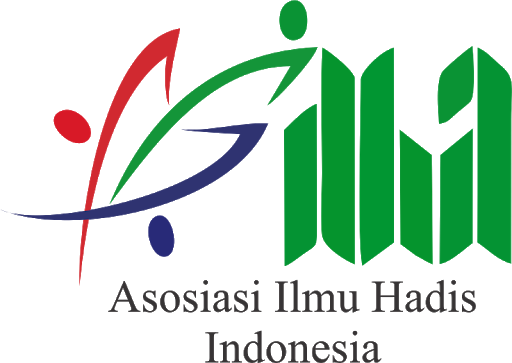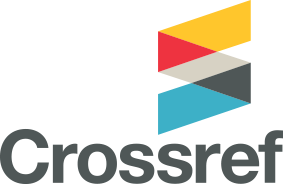PORSI DAN NUTRISI MAKANAN MUHAMMAD SAW Kajian Hadis Teks dan Konteks
DOI:
https://doi.org/10.14421/livinghadis.2016.1126Keywords:
nutrisi, porsi makan, kurma, obesitasAbstract
The primary factor in increase of fatness and obesity in Indonesia is food consumption pattern. This article is focused on assessing the nutritional intake of Muhammad based on hadis. By using thematic and nutritional science approach reflected the number of calories of the food of prophet Muhammad. The result can be a reference for muslims to balancing portions and nutrition also taking the purpose behind it. Abstract viewed: 1272 times
|
Abstract viewed: 1272 times
|
 PDF downloaded = 7007 times
PDF downloaded = 7007 times
References
Ahmad,Yusuf al-Hajj. Seri Kemukjizatan al-Quran dan Sunnah. Yogyakarta: Sajadah Press, 2008.
Andriawan, Didik. Rahasia Hidup Sehat Ala Rasulullah. Solo: Alfath Publishing, 2015.
As{baha>niy, Abu> Muhammad Abdullah ibn Muhammad ibn Ja’far ibn Hayyan. Akhla>q al-Nabi wa A>dabuhu. Beirut: Da>r Kitab al-‘Arabiy, 1986.
As}fiha>niy, al-Ra>ghib. Tafsi>r al-Ra>ghib al-As{fiha>ni. Maktabah Syamilah.
Asqola>ni, Ahmad Ibn ‘Ali Ibn Hajar >. Fath{ al-Ba>ri>{: Syarh{ S{ah{ih{ al-Bukha>ri>. T.tp: al-Maktabah as-Salafiyyah, t.th.
CD Mausu>```a>t al-H{adi>s| al-Syarif.
Direktorat Bina Gizi Masyarakat Kementerian Kesehatan RI. Poster berjudul Cara Mencegah dan Mengatasi Obesitas (Kegemukan) .
Ghazali, Muhammad. Ih{ya> ‘Ulu>muddin (Kairo: Muassasah al-Halbiy,1967.
Haitamiy, Syihabuddin Ahmad ibn Hajar. Asyra>f al-Wasa>il Ila Fahmi al-Wasa>’il. Beirut: Da>r Kutub al-‘Ilmiyyah, 1998.
Ibn Mukrim, Abu Fadl Muhammad. Lisa>n al-Arab. Beirut:Dar al-Kutub al-Ilmiyyah, t.th.
Jauziyyah, Ibn Qayyim. Za>d al-Ma’a>d Fi>Hadyi Khoir al-‘Iba>d. Beirut: al-Resalah, 1998.
K. Hitti, Philipp. History Of The Arabs, terj, Cecep Lukman Yasin dan Dedi Slamet Riyadi. Jakarta: Serambi Ilmu Semesta, 2010.
Kementrian Kesehatan Republik Indonesia. Pedoman Pencegahan dan Penanggulangan Kegemukan dan Obesitas Pada Anak Sekolah. Jakarta: Kementrian Kesehatan RI, 2012.
Mahran, Jamaluddin dan Abd al-Azim Hafna Mubasyir. al-Gaz|a wa al-Dawa>’ Fi al-Qur’a>n al-Kari>m, terj. Irwan Raihan. Yogyakarta:Mitra Pustaka, 2005.
Masyah, Syarif Hade(Ed.). Ensiklopedi Mukjizat Al-Quran dan Hadis. Indonesia: Sapta Sentosa, 2008.
Muhammad, Ahsin Sakho (ed.). Ensiklopedi Kemukjizatan Ilmiah dalam Al-Quran dan Sunnah. Salemba: PT Kharisma Ilmu, t.th.
Musbikin, Imam dan Miftakhul Asrar. Membedah Hadis Nabi SAW. Yogyakarta: Jaya Star Nine, 2015.
Sagiran. Sehat Gaya Rasul. Jakarta: QultumMedia, 2014.
Sayyid, `Abd al-Basit{ Muh{ammad. al-Taghdiyah al-Nabawiyyah, terj. Abdul Ghoffar. Jakarta: Almahira, 2014.
Suryadi. Pendekatan Tematik Dalam Memahami Hadis, ESENSIA, Vol. 3 No. 1 Januari 2002.
Suryadi. Rekonstruksi Kritik Sanad dan Matan Dalam Studi Hadis, ESENSIA, Vo. 16 No. 2 Oktober 2015.
Suryadilaga,M.Alfatih. Aplikasi Penelitian Hadis dari Teks ke Konteks . Yogyakarta: Teras, 2009.
Syahrazuri, Abu Amr Usman ibn Abd ar-Rahman. Ulu>m al-Hadi>s| Li Ibn al-S{ala>h{.
Tharsyah, Adnan Ma>z|a Yuhibbu an Nabi wa Ma>z|a Yukrihu, terj. Nur Faizah. Depok: Gema Insani, 2006.
Www. Depkes.go.id.
Www. Kbbi.web.id.
Www. Nationalgeographic.co.id.
Www. Pertanianku.com
Www.Fatsecret.co.id
Yusuf,Muhammad, “Aplikasi Metode Tematik Dalam Studi Hadis: Paradigma Integrasi-Interkoneksi Pendekatan Ekonomi Islam” dalam Abdul Mustaqim (ed.), Paradigma Integrasi-Interkoneksi Dalam Memahami Hadis .Yogyakarta: Teras, 2009.
Downloads
Published
Issue
Section
License
- Authors who publish with this journal agree to the following terms:
- Authors retain copyright and grant the journal right of first publication with the work simultaneously licensed under a Creative Commons Attribution License that allows others to share the work with an acknowledgement of the work's authorship and initial publication in this journal.
- Authors are able to enter into separate, additional contractual arrangements for the non-exclusive distribution of the journal's published version of the work (e.g., post it to an institutional repository or publish it in a book), with an acknowledgement of its initial publication in this journal.
- Authors are permitted and encouraged to post their work online (e.g., in institutional repositories or on their website) prior to and during the submission process, as it can lead to productive exchanges, as well as earlier and greater citation of published work.
















